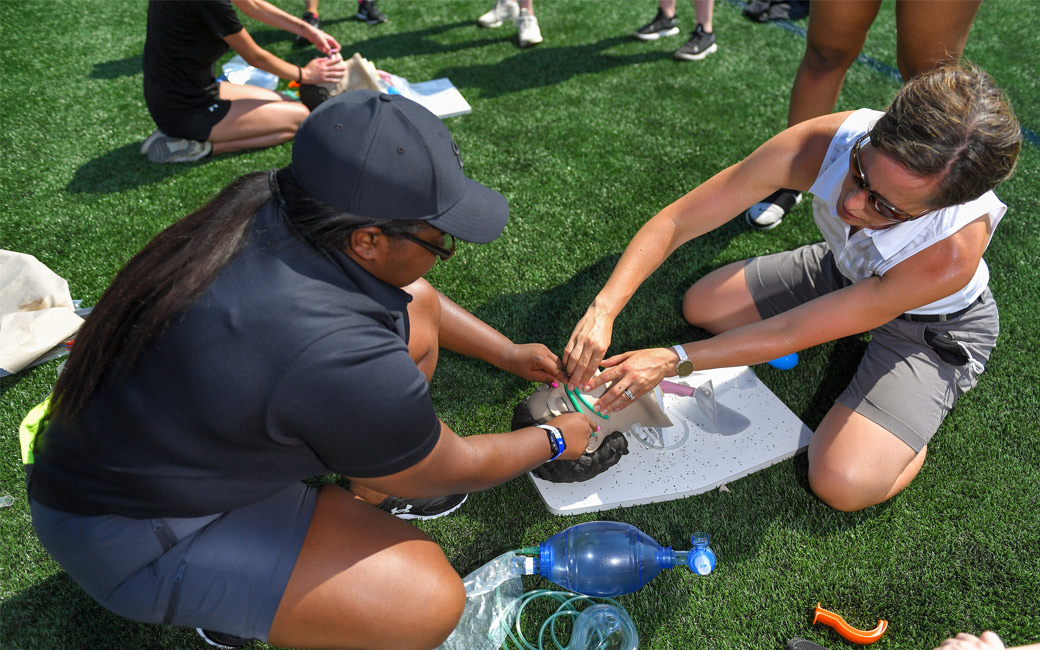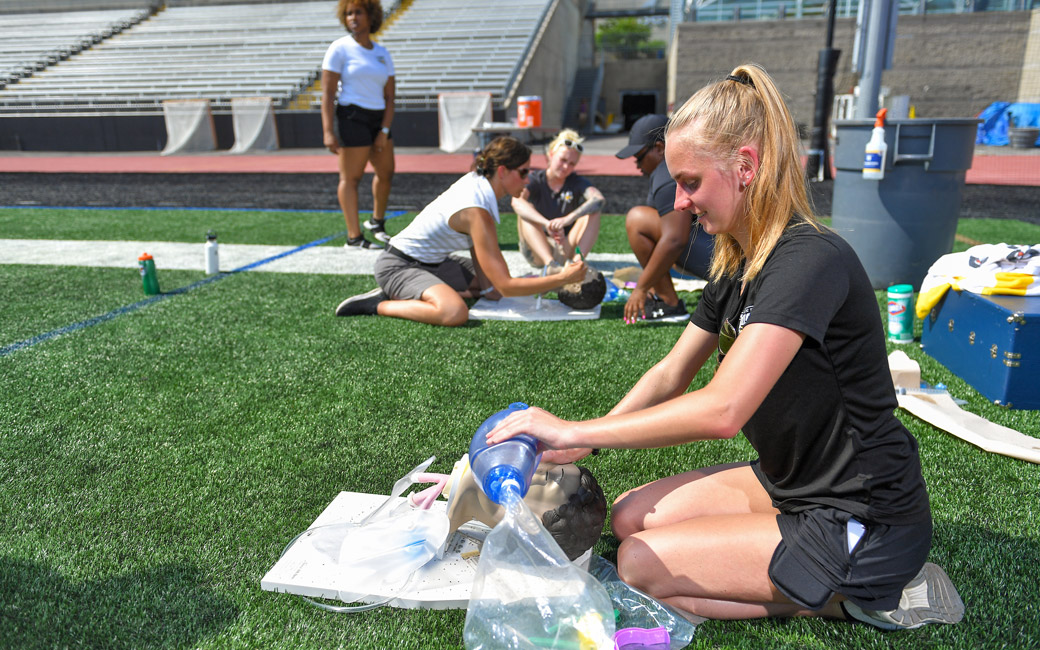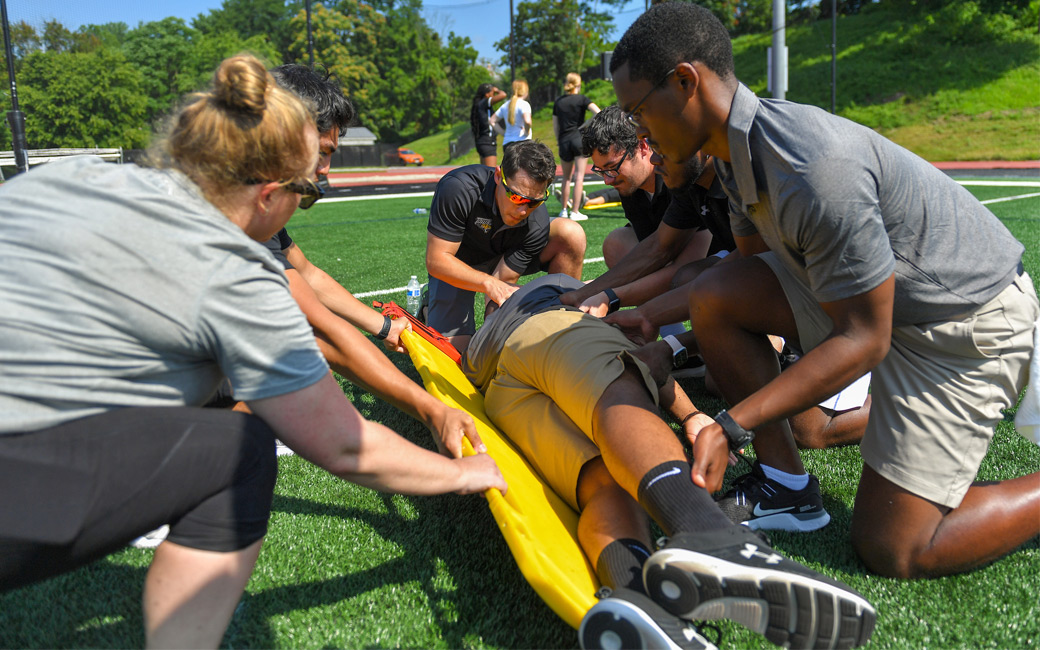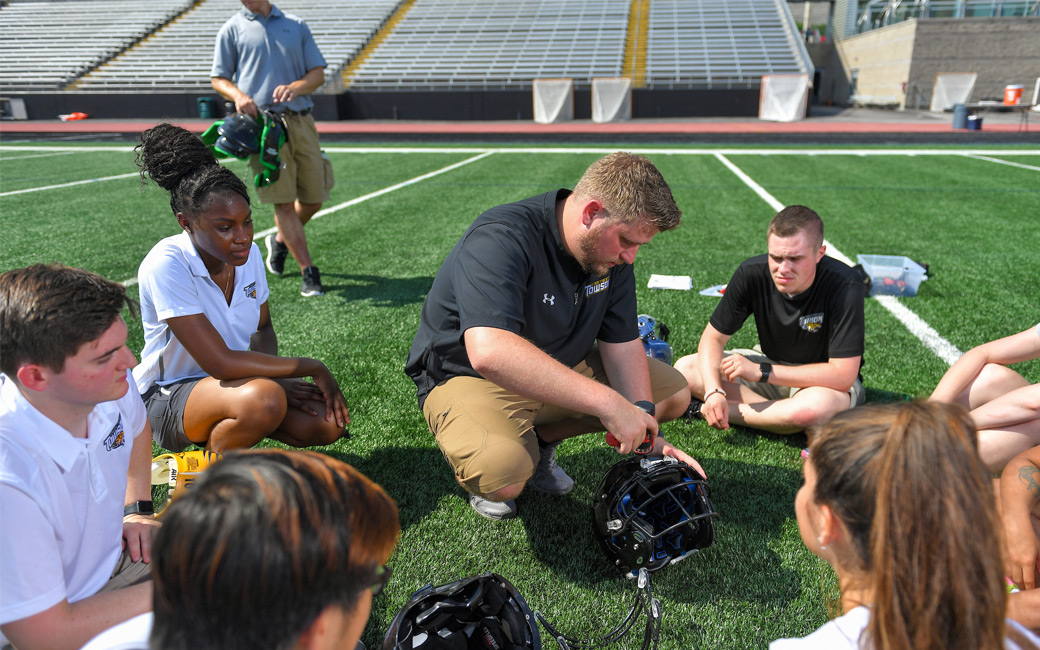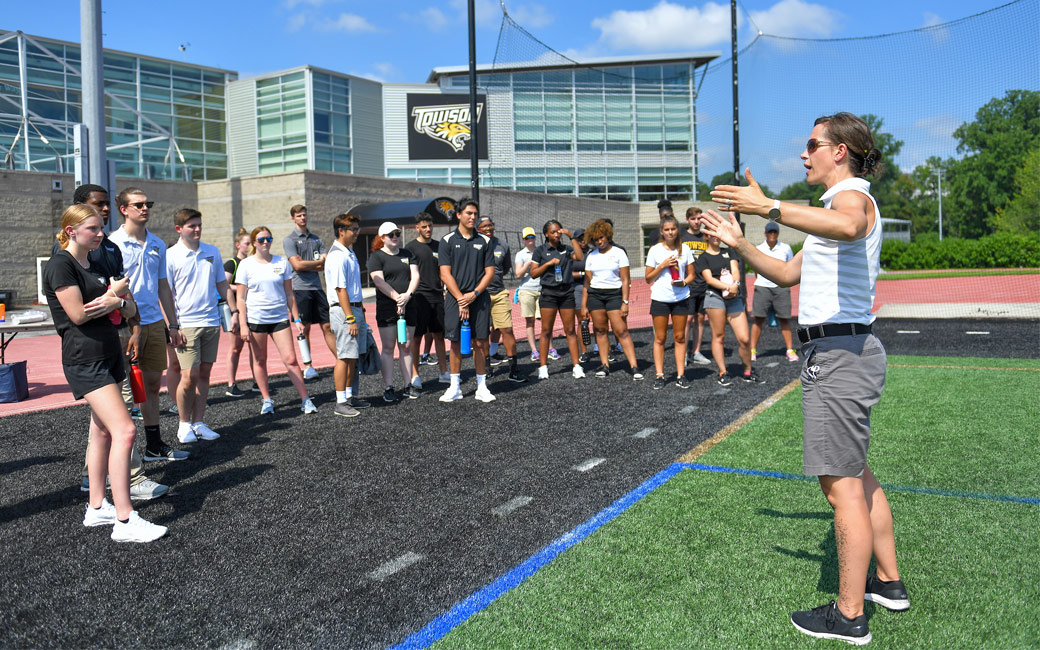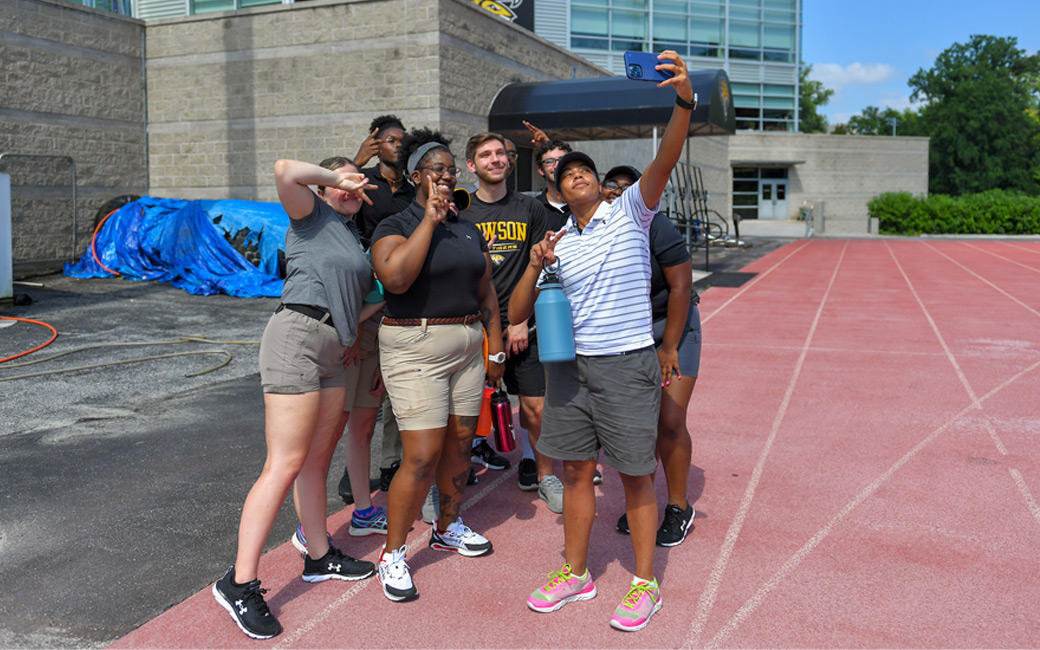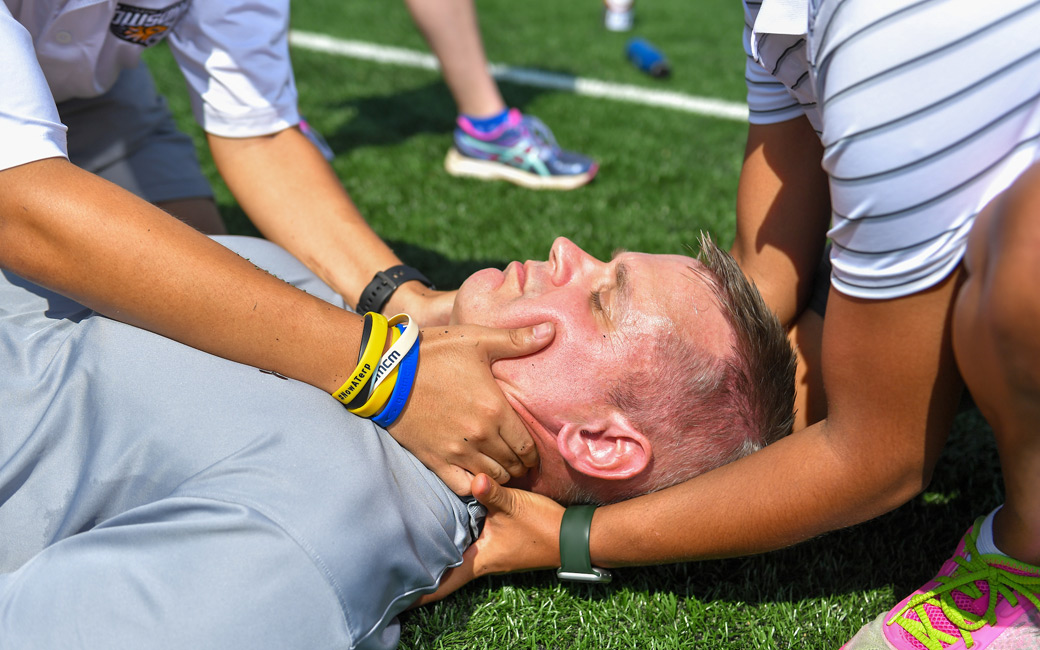
Athletic training students get hands-on practice of their own
Annual orientation event gives students intensive, practical education
By Cody Boteler on July 19, 2021
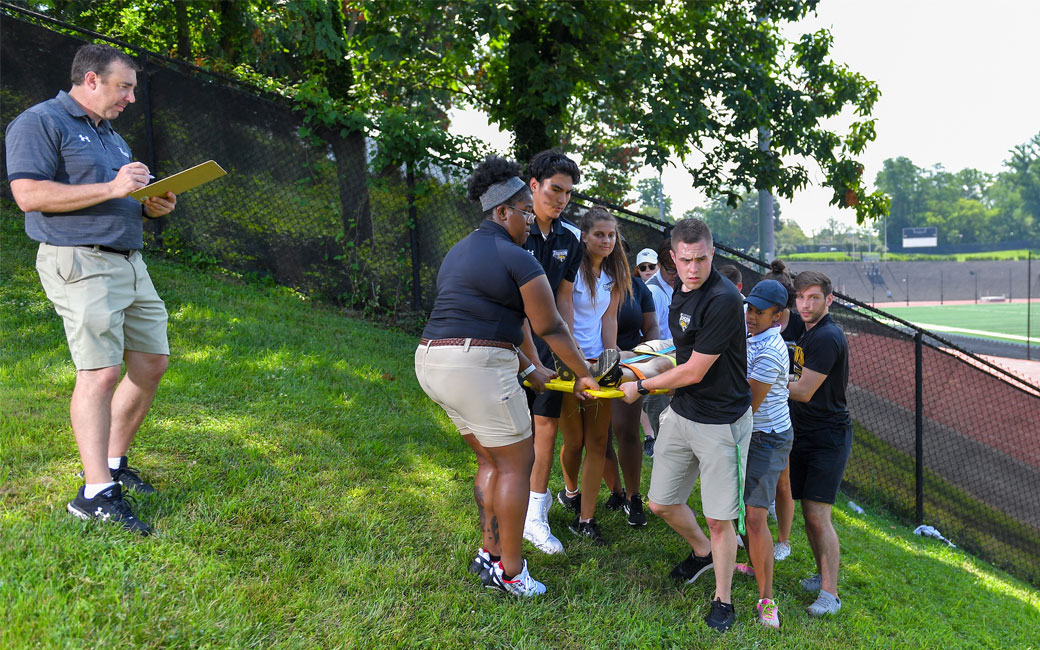
It’s a hot, summer day at Johnny Unitas® Stadium, and a dozen or so Towson University students are running toward a skiing accident.
A mock accident at least.
Upon arriving at the scene, the students, watched and evaluated by other faculty and staff, begin to “rescue” Lisa Custer, an associate professor in the Department of Kinesiology, as she lies on a grassy hill with faux injuries.
The students flipped the patient over and stabilized her on a spine board.
The mock spine stabilization was just one of 10 scenarios that graduate and undergraduate athletic training students went through during their annual orientation: an intensive, one-day event when students get hands-on experience with scenarios they might encounter in the field.
Among the skills practiced were how to clear a person’s airway or what to do if an athlete experiences cardiac arrest, says Emily Hildebrand, director of the graduate and undergraduate athletic training programs.
“This is one of our ways of staying up to date, of holding ourselves accountable,” Hildebrand says. “This is how the students know they’re ready.”
Damon Young, a student entering his final year of the undergraduate athletic training program, says the yearly orientations have been helpful in preparing him for emergency situations.
“Scenarios that we hopefully won’t see on a daily basis,” he says. “[The orientations] have been good for keeping us up-to-date with the latest information.”
In addition, students observed demonstrations of other hands-on skills and reviewed video footage of emergency scenarios where athletic trainers were first responders.
“I definitely grew in my competence at orientation,” says Kendall Stull, a student in her first year of the athletic training master’s program. “I think it was a great introduction to the program. It showed me what the professors will be expecting from us.”
Mary Nadelen, a clinical associate professor in the program, says athletic training students have been attending these orientations for at least 10 years.
It’s one day a year when the students, academic faculty and the staff from TU’s athletic teams all come together to hone their skills. Nadelen says the orientation day can be “overwhelming” at first but that it’s a great way for students to learn by doing.
apply now
Interested in athletic training?
Follow the link to learn more about admission requirements and deadlines for the athletic training M.S. program at Towson University.
“I’ll have students who graduate and then get back in touch a couple years later, once they’re working, and they’ll say, ‘Oh, I get it. I get why we went so hard,’” Nadelen says.
While Towson University no longer admits new students into the undergraduate program, there are two cohorts completing their degrees. Instead, athletic training is transitioning, nationwide, to a graduate-level program.
